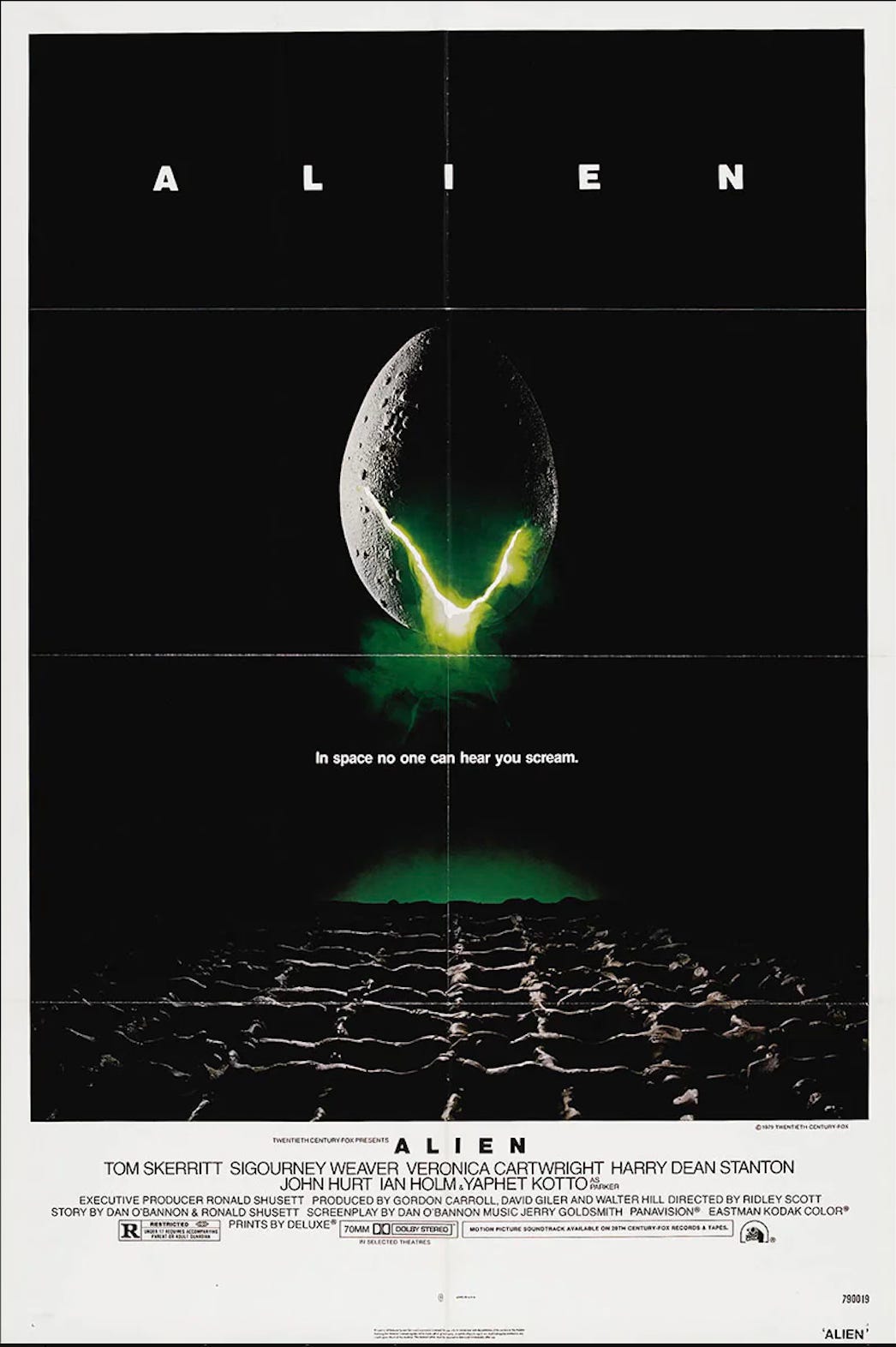Graphic design by: Steve Frankfurt and Philip Gips
The British Film Institute is currently holding a retrospective of Ridley Scott’s “finest films” across its London venues, highlighting the director’s mastery at world-building cinema. At the BFI Southbank there is an exhibition that gives you a glimpse at how these cinematic worlds are built through storyboarding, clapperboards, costumes, and film posters from Scott’s personal collection. The posters on display include Thelma and Louise (1991), The Duellists (1977), Blade Runner (1982), American Gangster (2007), and The Last Duel (2021), all presented in smart black frames. They’re all certainly eye-catching, however, none of these match the power of seduction found in the poster for Alien (1979). Its elements of mystery and dread still leaves spectators in awe after decades, despite many of us having seen the film that exists behind the artwork. Some say it’s among the best film posters of all time, but what makes it so?
How it provokes the imagination
Interestingly the poster doesn’t contain much imagery from the film. There’s an egg, however, the one in the film certainly doesn’t open up from the side nor does it glow bright neon green. Although the functions of the egg presented on the poster are misleading as to what we find in the film, it doesn’t leave a bad taste in the mouth or a sense of betrayal. You forgive this inconsistency because besides being aesthetically pleasing, the glow seeping from the crack of the egg prompts us to wonder what lurks from within, making the image highly seductive. It stirs the imagination, even for those of us who have seen the film, as we’re looking at a different egg and possibly a different force. Its difference from the film cleverly influences the feeling of the unknown. The shadow cast over its face invites us to think that it’s something that shouldn’t be discovered, thus we’re inclined to gravitate towards the forbidden.
Arguably the most powerful element of the poster, is the text placed just underneath the centre of the artwork that reads “In space no one can hear you scream.” The small text size guides you to stop and focus on what it says as this is not a poster designed to be viewed while on the move. It draws you into the depths of the poster, as you soak into the empty blackness that almost entirely consumes it. Once you digest the words and contemplate the horror and isolation of being trapped in space without the possibility of outside forces attending to your screams to save you from a creature that we can only presume is a serious threat to life, a deep sense of dread runs through you.
The unusually wide spacing between the letters in the title strengthen the sense of isolation and helplessness in the environment we imagine ourselves in. If any help exists, it’s too far away. And what intensifies this dread further is not knowing or being able to see what threat lurks in space that would make you scream. It’s also difficult to comprehend or clearly identify the material of the ground below the egg, further provoking unease. Does it signify death? Or that the ground we may tread on is treacherous rather than offering stability? What lurks within the depths of darkness, and what quantity? This mystery invites us to imagine the worst of our fears and provoke enough curiosity to want to witness what the characters discover on the planet, LV-426, making it one of the most effective posters of all time.
So… Is the film as good as the poster?
Keep reading with a 7-day free trial
Subscribe to Aesthete Reviews to keep reading this post and get 7 days of free access to the full post archives.


